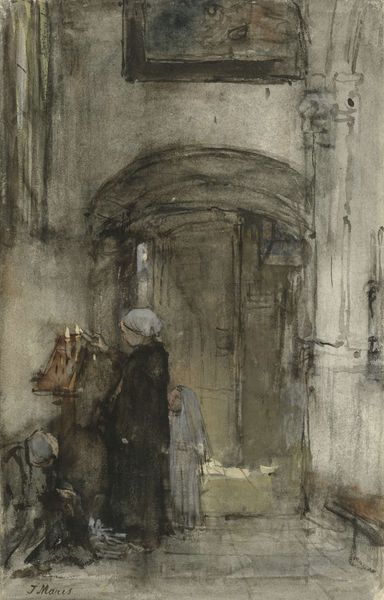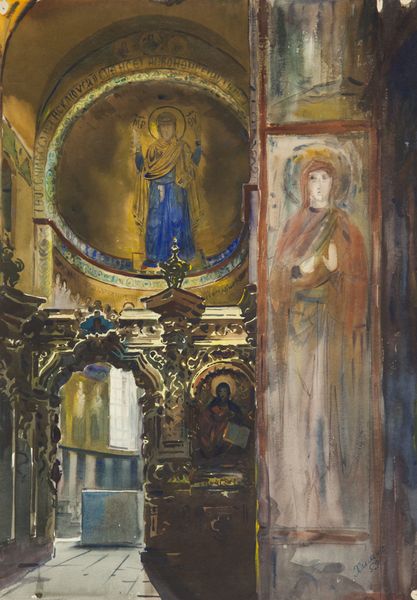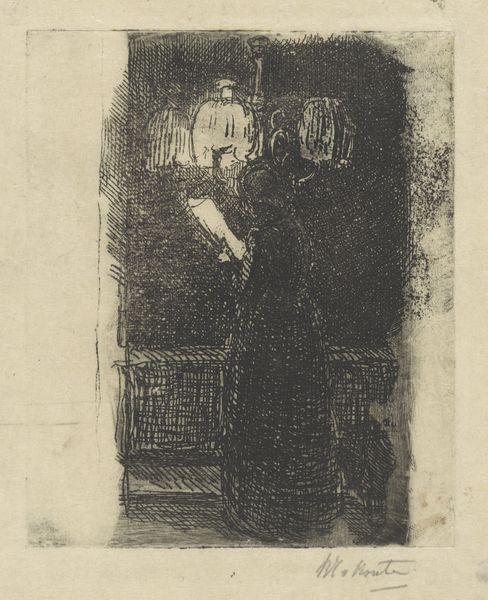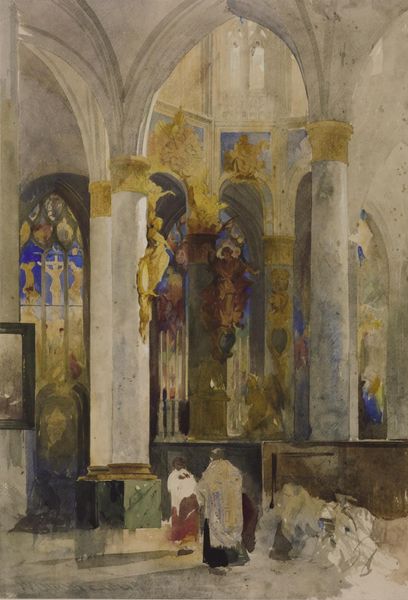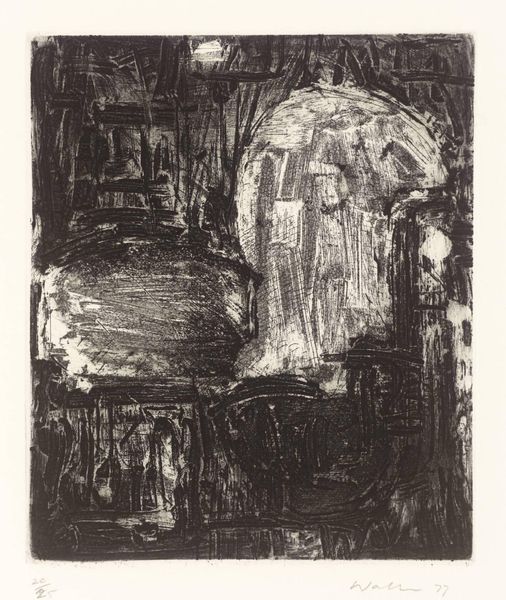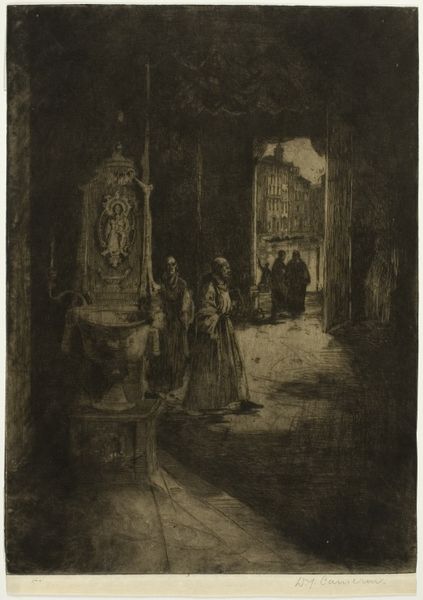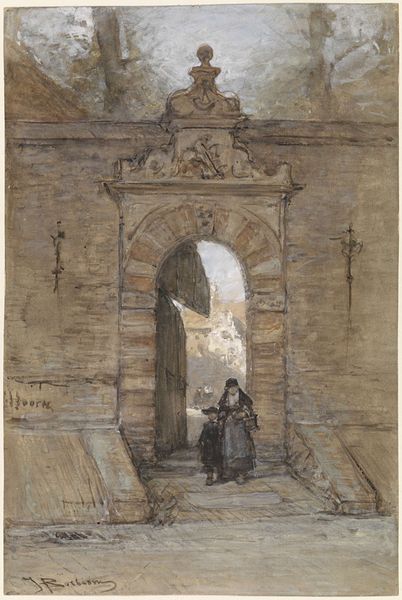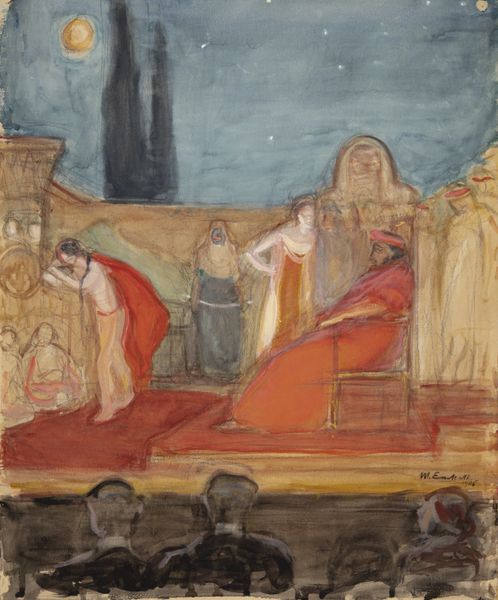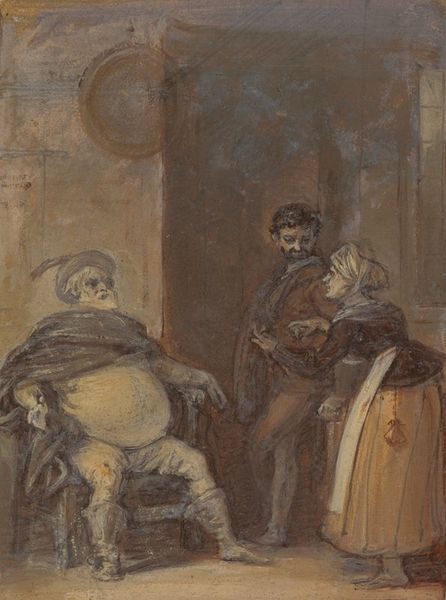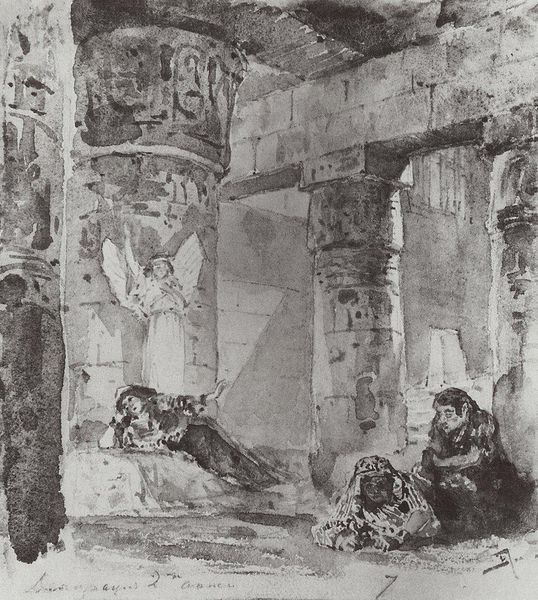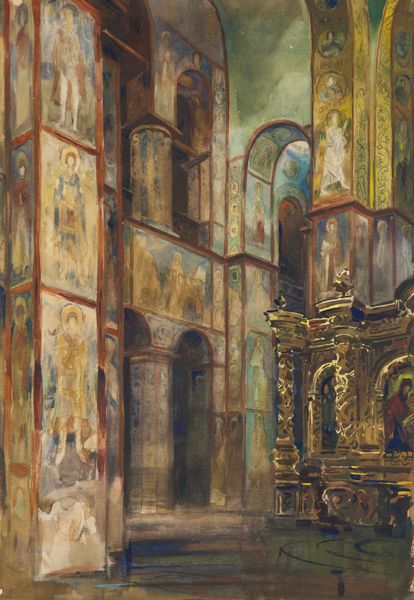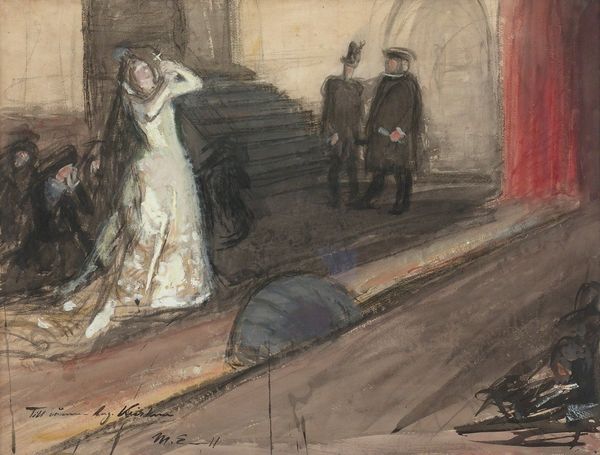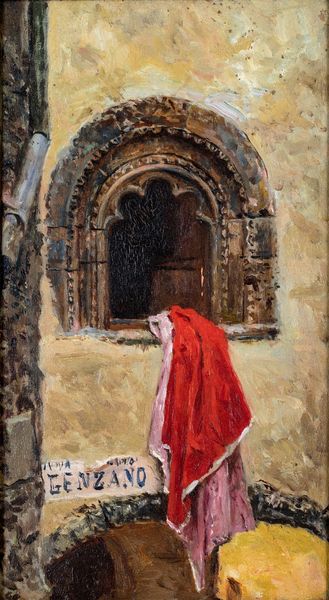
Dimensions: support: 410 x 311 mm frame: 550 x 450 mm
Copyright: CC-BY-NC-ND 4.0 DEED, Photo: Tate
Curator: Walter Sickert's "Pierrot and Woman Embracing" at the Tate; what a haunting vignette. What strikes you initially? Editor: It's like a stage set washed in melancholic shadows. The embrace itself, almost furtive, feels like a story half-told. Curator: Sickert had a knack for distilling drama. This work, likely from the late 19th or early 20th century, presents a world of hidden meaning. Editor: The Pierrot figure— historically a symbol of alienation. In what context does Sickert employ this figure to explore societal marginalization, and how does the woman play into that narrative? Curator: He often found inspiration in theatre and music hall culture. The Pierrot could be seen as a metaphor for the artist himself, observing life from the wings. Or perhaps it’s a commentary on performance and identity? Editor: Performance indeed! The artifice of identity... It reminds us that our roles are often dictated by societal expectation. Curator: Absolutely. Sickert compels us to contemplate the roles we play, and the shadows that define us. Editor: A powerful reminder that art, at its best, holds a mirror to the multifaceted layers of our existence.
Comments
tate 8 months ago
⋮
http://www.tate.org.uk/art/artworks/sickert-pierrot-and-woman-embracing-n05095
Join the conversation
Join millions of artists and users on Artera today and experience the ultimate creative platform.
tate 8 months ago
⋮
This is a preliminary sketch for Venetian Stage Scene, a painting now in a private collection. It combines Sickert's interests in architecture and theatre with a poignant element of fantasy.A central character of Italian and French pantomime, Pierrot was identified by his loose white clothes, white-painted face, tall hat and air of melancholy. The subject was to re-emerge a decade later, in Sickert's wartime meditation Brighton Pierrots, also on display here. Gallery label, August 2004
